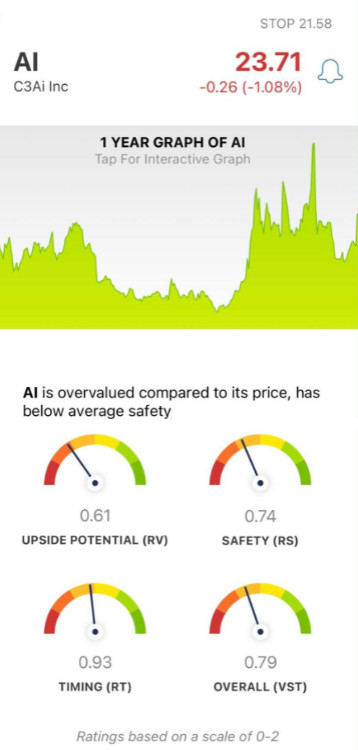The best approach to AI stock trading is to start small, and then increase the amount gradually. This approach is particularly helpful when dealing with high-risk environments such as penny stocks or copyright markets. This helps you gain experience, improve your algorithms and manage risk effectively. Here are the 10 best strategies for scaling AI stock trading operations in a gradual manner:
1. Start with a Clear Plan and Strategy
Tips: Determine your trading objectives, risk tolerance, and the markets you want to target (e.g. copyright, penny stocks) before diving in. Start with a small but manageable portion of your portfolio.
The reason is that a well-defined method will allow you to stay focused while limiting emotional decision-making.
2. Test your Paper Trading
Paper trading is a good method to start. It allows you to trade with real data without the risk of losing capital.
Why: This allows users to try out their AI models and trading strategies in real market conditions without financial risk and helps you detect any potential issues prior to scaling up.
3. Select a low cost broker or Exchange
Use a brokerage that has low fees, allows tiny investments or fractional trading. This is especially helpful when starting with copyright or penny stocks. assets.
Examples of penny stock: TD Ameritrade Webull E*TRADE
Examples of copyright: copyright copyright copyright
Reason: When you trade in small amounts, reducing charges for transactions can make sure that your profits are not reduced by commissions.
4. Initial focus is on a single asset class
Tip: To simplify and to focus the learning of your model, start with a single class of assets, such a penny stock, or copyright.
Why? Being a specialist in one particular market can help you develop expertise and reduce learning curves before expanding into different markets or different asset classes.
5. Use small size positions
You can reduce the risk of trading by limiting your size to a percentage of your portfolio.
What's the reason? This will help lower your risk of losing money, while you develop and fine-tune AI models.
6. Gradually increase your capital as you build confidence
Tip: Once you've seen steady positive results throughout several months or quarters, gradually increase your capital for trading however only when your system is able to demonstrate reliable performance.
Why? Scaling allows you to build up confidence in the strategies you employ for trading and the management of risk prior to taking larger bets.
7. For the first time, focus on a basic AI model.
TIP: Start with the simplest machine learning models (e.g., linear regression, decision trees) to forecast the price of copyright or stocks before advancing to more complex neural networks or deep learning models.
Reason: Simpler models are easier to understand, maintain, and optimize, which helps to start small when getting familiar with AI trading.
8. Use Conservative Risk Management
TIP: Use strict risk management guidelines, including tight stop loss order, position sizes limits, and use leverage in a conservative manner.
Reasons: Risk management that is conservative can prevent huge losses from occurring early in your trading careers and helps ensure the viability of your approach as you grow.
9. Returning the profits to the system
Tip: Instead, of making a profit and then reinvesting it, put the profits in your trading systems to enhance or scale operations.
The reason: Reinvesting profits can help you compound returns over time, while improving the infrastructure needed to handle larger-scale operations.
10. Review and Improve AI Models on a regular basis
Tip: Constantly monitor your AI models' performance, and optimize their performance by using the latest algorithms, better data or improved feature engineering.
Reason: Regular model improvement increases your ability to anticipate the market when you increase your capital.
Bonus: If you have solid foundations, you should diversify your portfolio.
Tip: Once you have a good base in place and your system is consistently effective, think about expanding to other types of assets.
The reason: Diversification is a great way to reduce risk, and improve returns since it lets your system benefit from different market conditions.
If you start small and scale slowly, you give yourself time to learn how to adapt, grow, and establish a solid trading foundation which is vital to long-term success in high-risk environment of the copyright and penny stocks. Check out the best trading chart ai tips for more examples including smart stocks ai, ai investment platform, trading ai, free ai trading bot, trading chart ai, free ai tool for stock market india, ai penny stocks to buy, ai stock, best stock analysis website, ai for trading stocks and more.

Top 10 Tips For Understanding The Ai Algorithms For Prediction, Stock Pickers And Investment
Knowing AI algorithms is important for evaluating the effectiveness of stock analysts and aligning them with your investment objectives. Here's 10 best AI techniques that will assist you to better understand stock forecasts.
1. Machine Learning Basics
Tips: Understand the fundamental principles of machine learning (ML) models like unsupervised learning, supervised learning and reinforcement learning which are used extensively for stock forecasting.
What are they? They are the basic techniques the majority of AI stock analysts rely on to study the past and make predictions. Understanding these concepts is crucial to understanding the ways in which AI analyzes data.
2. Be familiar with the common algorithm for Stock Picking
Search for the most common machine learning algorithms used in stock selection.
Linear Regression (Linear Regression) is a method of forecasting price trends using historical data.
Random Forest: Using multiple decision trees to improve prediction accuracy.
Support Vector Machines SVM Classifying shares as "buy", "sell" or "neutral" in accordance with their features.
Neural Networks (Networks) Utilizing deep-learning models for detecting complicated patterns in market data.
Understanding the algorithms utilized by AI can help you make better predictions.
3. Study Feature Selection & Engineering
Tips: Learn the way in which the AI platform chooses (and processes) features (data to predict), such as technical indicators (e.g. RSI, MACD) financial ratios or market sentiment.
Why: The quality and importance of features significantly impact the performance of the AI. The degree to which the algorithm is able to learn patterns that lead profitably predicts depends on how well it can be designed.
4. You can find Sentiment Analyzing Capabilities
Find out whether the AI analyses unstructured data like tweets and social media posts, or news articles by using sentiment analysis and natural processing of language.
The reason is that sentiment analytics can help AI stockpickers gauge markets mood, especially in volatile market like penny stocks and cryptocurrencies where news and shifts in sentiment can dramatically affect prices.
5. Backtesting: What is it and how does it work?
TIP: Ensure that the AI model uses extensive backtesting with data from the past to refine its predictions.
What is the reason? Backtesting can help discover how AIs performed during past market conditions. It provides an insight into the algorithm's strength and reliability, assuring it's able to deal with a range of market conditions.
6. Risk Management Algorithms are evaluated
Tip: Know the AI's risk management functions like stop loss orders, size of the position and drawdown limits.
Risk management is essential to avoid losses that can be significant, especially in volatile markets such as copyright and penny stocks. For a balanced trading strategy, algorithms that mitigate risk are crucial.
7. Investigate Model Interpretability
Tips: Search for AI that provides transparency about how the predictions are made.
The reason: A model that can be interpreted allows you to understand the reason for why an investment was made and what factors influenced the choice. It increases trust in AI's recommendations.
8. Investigate the effectiveness of reinforcement learning
Learn about reinforcement-learning (RL), an area of machine learning in which algorithms are taught through trial and error and adjust strategies according to rewards and punishments.
Why? RL is used for markets with dynamic and changing dynamics, such as copyright. It is able to optimize and adjust trading strategies based on the results of feedback, which results in improved long-term profitability.
9. Consider Ensemble Learning Approaches
Tip: Check whether AI makes use of ensemble learning. This is when a variety of models (e.g. decision trees or neuronal networks) are employed to create predictions.
The reason: Ensembles models increase accuracy in prediction by combining several algorithms. They reduce the risk of error and increase the reliability of stock-picking strategies.
10. Think about Real-Time Data in comparison to. Utilize historical data
TIP: Learn whether the AI model is more dependent on real-time data or historical data to make predictions. A lot of AI stock pickers use a combination of both.
Why is real-time data is vital for active trading, particularly on unstable markets like copyright. However, historical data can be helpful in predicting trends over time. A balance between the two is usually the ideal choice.
Bonus: Understand Algorithmic Bias and Overfitting
Tips: Be aware of possible biases when it comes to AI models. Overfitting occurs the term used to describe a model that is dependent on past data and can't adapt to changing market situations.
The reason: Overfitting or bias could alter AI predictions and lead to low performance when paired with real-time market data. To ensure its long-term viability the model needs to be regularly standardized and regularized.
By understanding the AI algorithms that are used in stock pickers and other stock pickers, you'll be better able to evaluate their strengths and weaknesses, and their suitability to your style of trading, regardless of whether you're focused on copyright, penny stocks as well as other asset classes. It is also possible to make informed decisions based on this knowledge to determine which AI platform will be the best for your strategies for investing. View the top rated my review here for copyright predictions for more recommendations including ai for trading, ai day trading, ai investment platform, ai for copyright trading, ai for copyright trading, ai for trading, artificial intelligence stocks, ai for investing, stocks ai, ai trading app and more.
